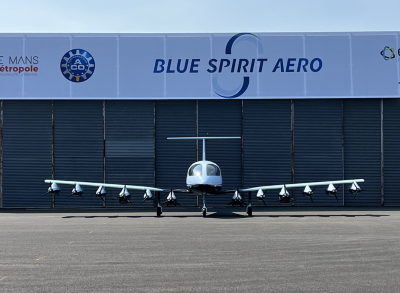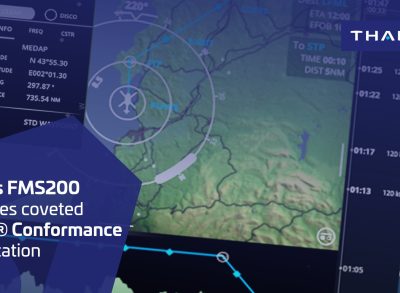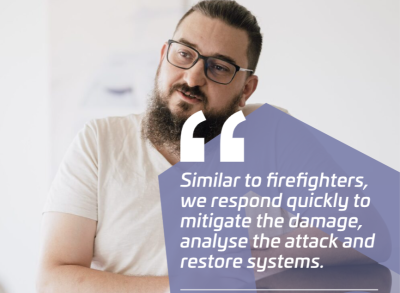A GNSS describes any satellite navigation system with world coverage. While GPS is by far the first and best-known example, several other systems are already in use or under development: Galileo (Europe), Compass (China) and GLONASS (Russia). By providing precise information about position, speed and time, a GNSS enables navigation on land and in the air, and is also used, amongst other things, to synchronise data transfers in telecommunications and banking.
World leader
With some 8,000 GNSS receivers sold, Thales is a leading force in the market, ranked number three in civil aviation receivers. Clients include Airbus, Boeing, Sikorsky and ATR. In the military sector, some 15 nations use Thales receivers across 20 platforms, including humanitarian and freight aircraft, fighters, helicopters, drones, radars, boats and submarines. Thales, the only non US manufacturer of military GPS receivers, has also developed a full range of state-of-the-art GNSS anti jamming and anti interference tools (smart antennas, blending with inertial systems and MEMS).
Thales’s involvement goes beyond receivers. “We are present across the whole value chain of GNSS constellations,” says Philippe Laviron, Head of Strategy & Development, Thales Avionics. “For Galileo, which should start operations in 2014, a team at Thales Alenia Space designs and produces signal generators for satellites, and we are also responsible for the control centres that monitor the satellite signal.”
Improving signal accuracy
Thales also provides network, signal and receiver solutions for EGNOS, the European satellite-based augmentation system (SBAS). “EGNOS helps improve the accuracy of GPS to within a few metres,” explains Pierre Bouniol, Manager at Thales’s GNSS Products Department. “The system uses key points to measure discrepancies in transmitted signals and then broadcasts all corrections accordingly.”
GNSS technology is evolving quickly, and Thales is already preparing a range of innovations for the future. “A key product for us will be multi-constellation receivers, which will offer increased accuracy and reliability by integrating signals from two or more constellations,” says Laviron.
SESAR and NextGen
The future also involves SESAR and NextGen. According to Pierre Bouniol, “GNSS is the basis to guaranteeing that national authorities and industry can efficiently handle the forecast increase in air traffic”. As such, Thales is investing in increasing the precision of GNSS technology and in perfecting tools to reduce signal jamming and interruption.
The next ten years will bring a wealth of developments in the GNSS field, including the arrival of new constellations such as Galileo and of dual frequencies to separate civil and military signals. With its ample experience and drive for innovation, Thales is well-equipped to strengthen its position as a market leader.




